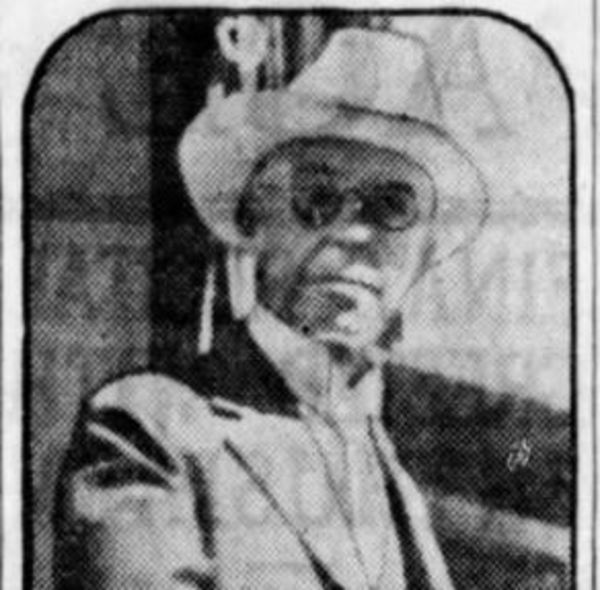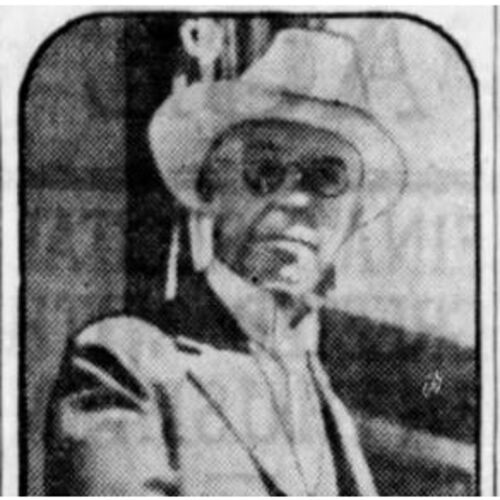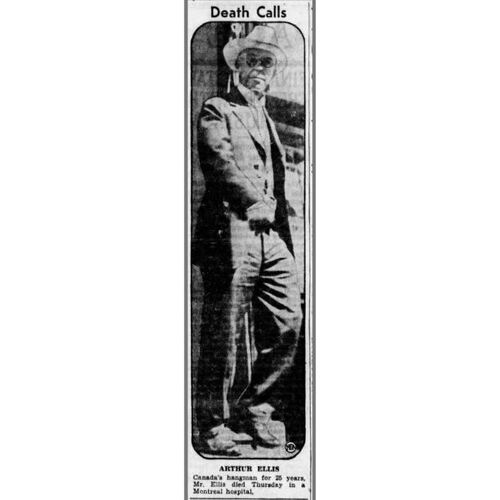
Source: Link
ENGLISH, ALEXANDER ARMSTRONG (he was known as Arthur Bartholomew English and Arthur Bartholomew Alexander English, and he used the pseudonym Arthur Ellis), soldier and executioner; b. 11 or 12 March 1865, possibly in Newcastle upon Tyne, England; m. 20 May 1916 Edythe (Edith) Grimsdale (1877–1960) in Montreal, and they may have adopted a daughter; d. there 21 or 22 July 1938.
According to some accounts – many details of his life are shrouded in mystery – Alexander English was the son of a British army officer. He initially followed in his father’s footsteps and became a soldier, reportedly serving with the Northumberland Fusiliers in India and the Middle East, winning the army’s lightweight boxing championship and participating in the South African War. After returning to England in the early 1900s, he learned how to perform executions, possibly under the tutelage of hangman John Ellis, who was apparently his uncle. He then practised his new trade in England and the Middle East until 1910, when John Robert Radclive (Radcliffe), Canada’s unofficial national executioner, retired from the profession. English succeeded him that year, and following a tradition of assuming a pseudonym in this occupation, he took the name Arthur Ellis.
Because executions were a provincial matter under Canadian law, Ellis was not actually employed by the federal government but was hired by local sheriffs wherever his services were required. He was based near Bordeaux Jail in Montreal for most of his 25-year career but travelled extensively from British Columbia to the Maritimes to perform hangings. Ellis was one of the new breed of executioners in this era who took a scientific approach to what they regarded as a grisly art. His goal was to ensure that each hanging would be carried out quickly and smoothly, and he once admitted, “My only fear is that sometime I may make a mistake and inflict unnecessary torture on the prisoner.” It was essential for hangmen to correctly judge the distance that the condemned had to drop to break the neck cleanly: if it was too short, a slow death by strangulation would result, and if it was too long, the head could be torn from the body. For this reason, on the night before the execution Ellis typically measured and weighed the prisoner in the clothes that would be worn to the gallows. He then used statistical tables to determine the length of rope needed for the job. The next day he would help the doomed individual climb up the scaffold and then set the noose. After the chaplain’s prayer Ellis would click his heels and pull the lever that opened the trapdoor, plunging the condemned to his or her death.
Ellis, who was described by the Toronto Daily Star as a “dapper little Englishman,” did his best to bring dignity to the hangings he conducted. He always dressed elegantly, insisted that the proceedings be kept as private and solemn as possible, and, unlike some others in his trade, refused to sell bits of used rope or the personal effects of prisoners as souvenirs. For his travel and services Ellis would be paid $150 to $200 in addition to his expenses. This was generous remuneration compared with the earnings of counterparts in England and the United States; John Ellis received just two pounds and ten shillings plus expenses per hanging (and another two pounds and ten shillings for good conduct in the community), whereas American John W. Hulbert was paid $50, later raised to $150, for each engagement.
Over the course of his career, including his time in England and in the Middle East, Ellis may have performed as many as 550 to 600 executions. Most were done relatively well, but the business of hanging people was not an exact science, and his reputation was marred by two notorious incidents. On 25 Aug. 1926 Daniel Prockiw (Proceiv), a 240-pound Winnipeg man convicted of killing his wife, plummeted through the trapdoor with such force that he was decapitated. Almost nine years later, on 29 March 1935, Thomassina Sarao, who had been sentenced to death for orchestrating the murder of her husband, met the same gruesome fate in Montreal. That this horror had been visited upon a female prisoner particularly shocked Canadians, and Ellis was accused of having miscalculated the length of rope required for the job. He maintained that he had been prevented from measuring and weighing Sarao beforehand, and was adamant that he had been given her incorrect weight, threatening to sue journalists who blamed him for the outcome. Nevertheless, the public perception of bumbling on Ellis’s part effectively ended his career.
Although executioners tended to be stoic in public, the moral ambiguity of their profession and the social stigma attached to it often took an emotional toll: John Radclive died of alcoholism, for example, and John Ellis and John Hulbert both committed suicide. Arthur Ellis maintained that his work was a “humane duty” that did not trouble him, and he once claimed, “When I spring the trap my mind is relaxed and I have the feeling that I am ten years younger.” His personal life, however, was undoubtedly affected by his job. Ellis married Edythe Grimsdale in 1916 (he is described as “a widower” on the marriage registration, but nothing is known of his previous wife). After finding out his true occupation – he had told her that he was a salesman – and accusing him of domestic abuse, she separated from him in 1922. Six years later he claimed that they were living together again, but if there was a reconciliation, it apparently did not last. After the Sarao hanging Ellis struggled to find work because of his prior trade; he was briefly employed in a Montreal department store but had to be let go because customers refused to be served by a former executioner.
Arthur Ellis was lonely and impoverished in his final years, residing in a boarding house near Montreal’s central police station and living off small loans from friends. He died, possibly after suffering from starvation, at the Hôpital Sainte-Jeanne d’Arc on 21 or 22 July 1938 and was interred at Mount Royal Cemetery. In two ways his name would live on long after his death. First, English Canadian executioners would use Ellis as a pseudonym until the abolition of the death penalty in 1976. Secondly, and more enduring, in 1984 the Crime Writers of Canada named its annual awards for literary excellence in honour of Arthur Ellis.
Thanks are extended to the staff at Mount Royal Cemetery in Montreal for providing information about the interment and gravesite of Alexander Armstrong English and Edythe Grimsdale.
FD, Presbyterian Saint Giles (Montreal), 20 May 1916; United Church Saint Georges (Montreal), 23 July 1938. Gazette (Montreal), 21, 22 July 1938. Globe, 8 Oct. 1913. Saskatoon Star-Phoenix, 22 July 1938. Toronto Daily Star, 22 Dec. 1928, 21, 22 July 1938. F. W. Anderson, A concise history of capital punishment in Canada ([Calgary, 1973]). Ken Leyton-Brown, The practice of execution in Canada (Vancouver, 2010). Jeffrey Pfeifer and Ken Leyton-Brown, Death by rope: an anthology of Canadian executions (1v. to date, Regina, 2007– ), 1. G. D. Robin, “The executioner: his place in English society,” British Journal of Sociology (London), 15 (1964): 234–53.
Cite This Article
Marc Patenaude and Allan Patenaude, “ENGLISH, ARTHUR BARTHOLOMEW,” in Dictionary of Canadian Biography, vol. 16, University of Toronto/Université Laval, 2003–, accessed December 28, 2025, https://www.biographi.ca/en/bio/english_alexander_armstrong_16E.html.
The citation above shows the format for footnotes and endnotes according to the Chicago manual of style (16th edition). Information to be used in other citation formats:
| Permalink: | https://www.biographi.ca/en/bio/english_alexander_armstrong_16E.html |
| Author of Article: | Marc Patenaude and Allan Patenaude |
| Title of Article: | ENGLISH, ARTHUR BARTHOLOMEW |
| Publication Name: | Dictionary of Canadian Biography, vol. 16 |
| Publisher: | University of Toronto/Université Laval |
| Year of publication: | 2020 |
| Year of revision: | 2020 |
| Access Date: | December 28, 2025 |




